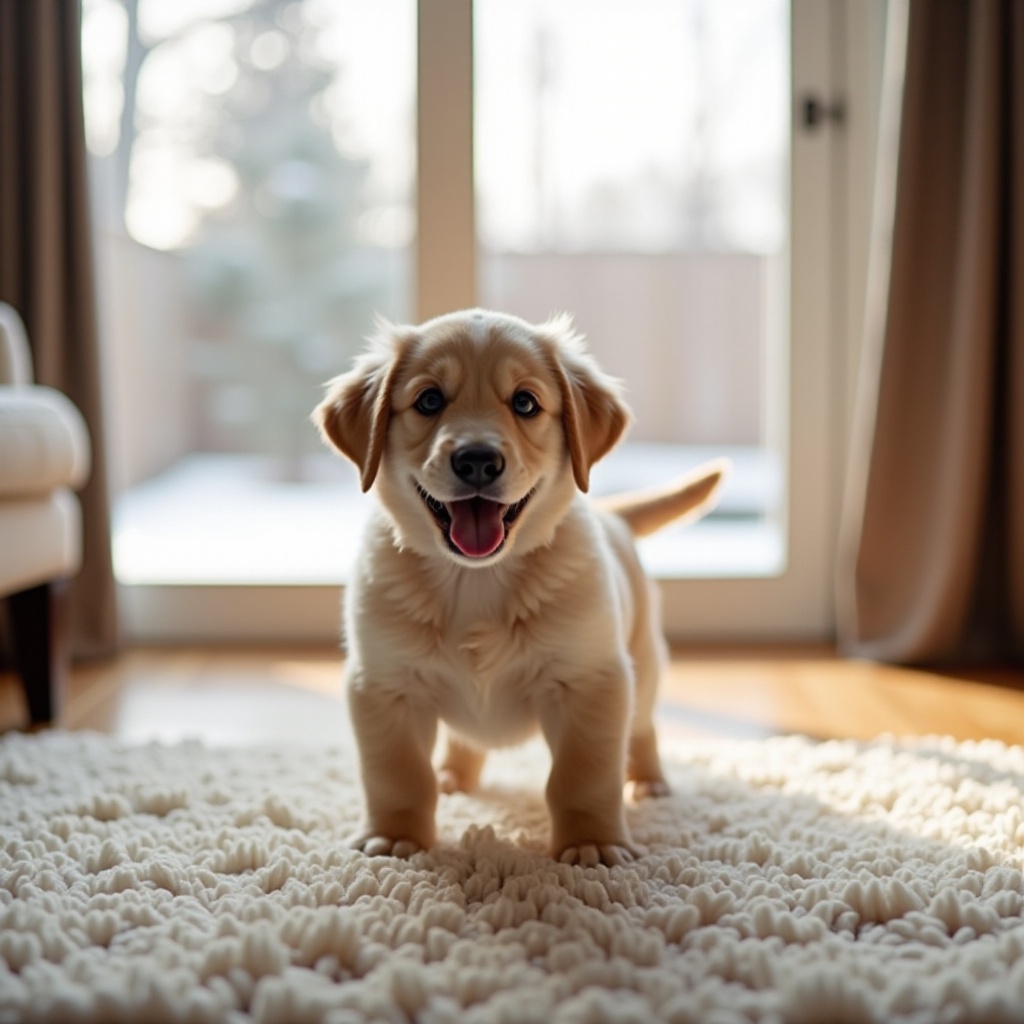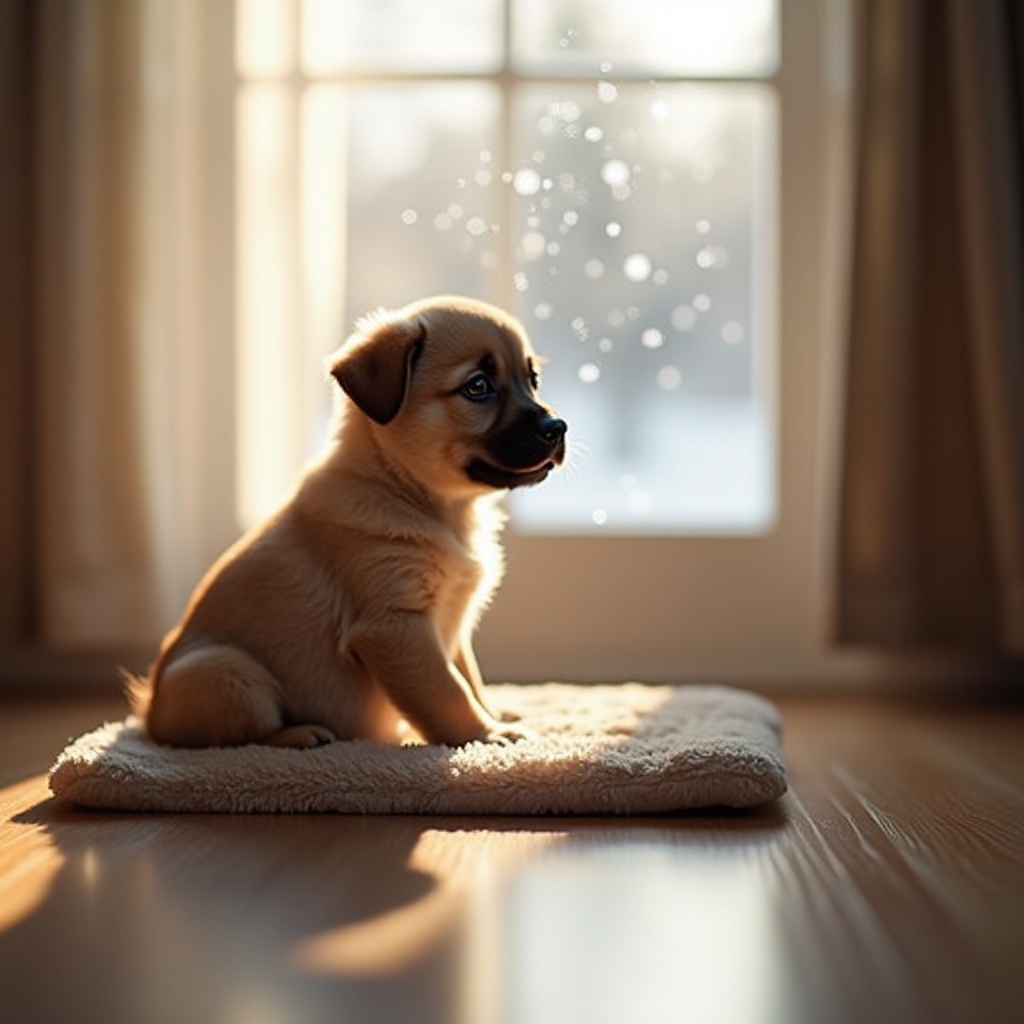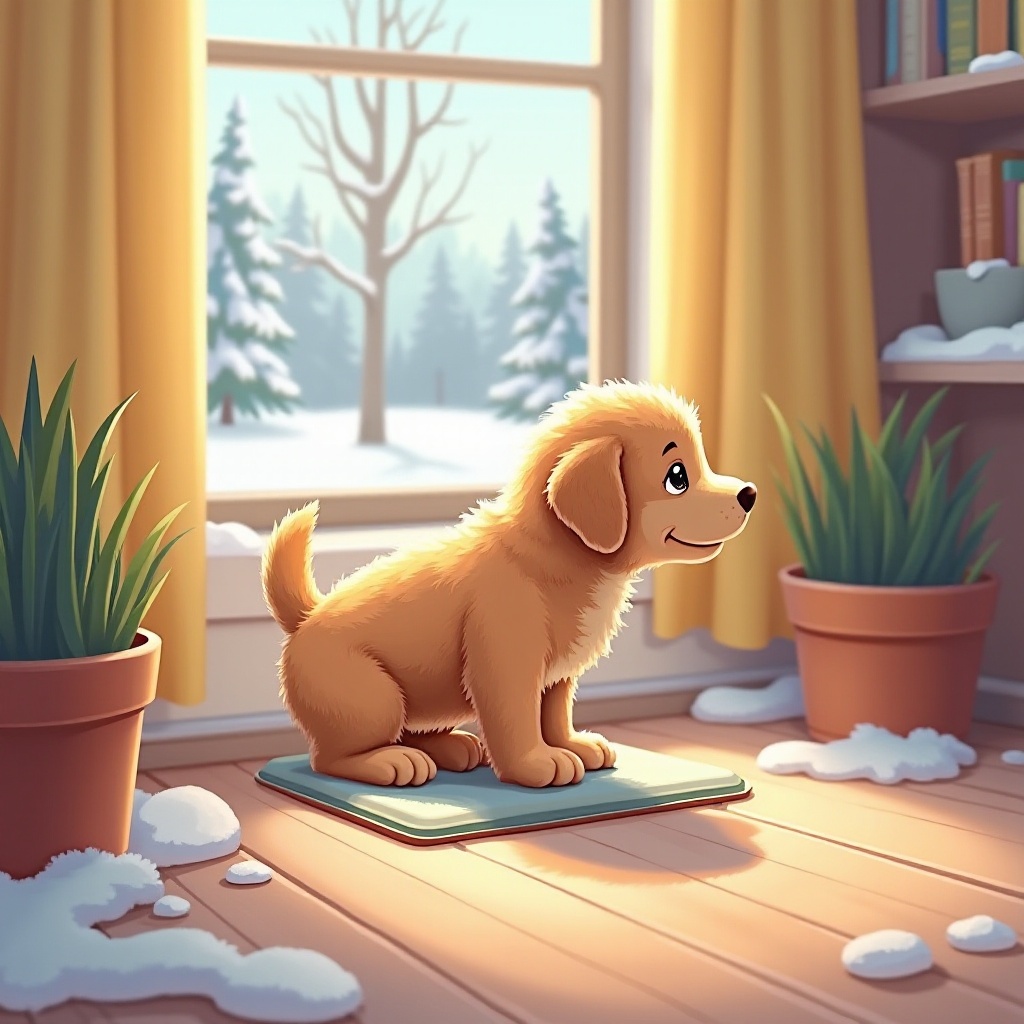Introduction
Winter can be a challenging season for potty training a new puppy. The cold weather, snow, and ice make it hard for them to focus and learn effectively. But with the right approach, you can still achieve successful results. This guide will offer comprehensive tips to navigate winter puppy potty training in 2024, covering everything from understanding your puppy’s needs to troubleshooting common issues.

Understanding Your Puppy’s Needs
Before you begin potty training, it’s essential to understand your puppy’s basic needs. Puppies have small bladders and low awareness of their bodily functions. They will need frequent breaks, about once every one to two hours. Knowing this will help you recognize when your puppy is likely ready to go outside and can help prevent accidents inside the house. Additionally, since the cold weather can be stressful for puppies, it’s important to make the experience as positive and comfortable as possible.
A consistent approach is vital for success. Puppies need consistency to understand what’s expected of them. When they know they have your love and support, they are more likely to succeed in adjusting to your schedules and routines. Make sure to follow a structured approach to help them understand when and where to go.

Essential Potty Training Tools for Winter
Equipping yourself with the right tools can make a significant difference in your puppy’s potty training success during winter. Here are some essential items:
-
Pet-Friendly Ice Melt: Use a safe, pet-friendly ice melt to avoid causing irritation to your puppy’s paws.
-
Non-slip Mats: Place these mats around entry doors to prevent slipping on wet surfaces.
-
Warm Apparel: Invest in a good quality, well-fitting coat or sweater to keep your puppy warm during outdoor breaks.
-
Paw Protection: Consider booties to protect your puppy’s paws from cold surfaces and harmful substances found in ice melts.
-
Indoor Grass Pads: If the weather is too extreme, indoor potty options like grass pads can be helpful.
Having these tools on hand will help in maintaining a positive and effective potty training regimen during the winter months.

Establishing a Winter Potty Routine
Creating a structured routine is crucial for winter potty training. Consistent timing and actions will help your puppy understand and predict what’s expected of them.
Setting Up a Schedule
Set regular intervals for potty breaks. Taking your puppy out first thing in the morning, after meals, and before bedtime establishes a routine. Puppies will begin to understand that these are their designated times to go potty.
Indoor vs. Outdoor Training
Weather conditions can sometimes be too harsh for outdoor potty training. It’s important to decide whether to train your puppy indoors or outdoors based on the weather. For extreme cold, consider setting up an indoor potty station with grass pads or puppy pads. Ensure that the area is designated and that your puppy knows this is an acceptable place to relieve themselves.
Continuing the routine, if the weather improves, transition your puppy back to outdoor potty training to avoid confusion and maintain consistency.
Dressing Your Puppy for Winter Success
Proper clothing can make outdoor potty training during winter more effective. Puppies, especially those with short hair, need protection from the harsh elements.
- Coats and Sweaters: Ensure your puppy is wearing a well-fitted coat or sweater. Look for water-resistant materials to keep them dry.
- Booties: Protect your puppy’s paws from the cold and irritants like salt and ice melt with booties.
Introduce these items gradually and make sure your puppy is comfortable wearing them before expecting them to do their business outside.
Making Outdoor Potty Trips Enjoyable
Make outdoor potty trips enjoyable by creating positive associations with being outside. Here are some tips:
-
Praise and Rewards: Consistently praise and reward your puppy when they go potty outside. Positive reinforcement makes them more likely to repeat the behavior.
-
Short, Frequent Trips: Keep trips short to prevent your puppy from getting too cold or overwhelmed. Multiple brief breaks are better than one long, stressful one.
-
Playtime: Incorporate a little playtime before or after potty breaks to associate positive experiences with being outside in the cold.
Troubleshooting Common Potty Training Issues
No training process is without its hiccups. Here’s how to handle some common issues:
Dealing with Indoor Accidents
Accidents happen, and it’s crucial to address them correctly.
-
Immediate Clean-Up: Clean accidents immediately using an enzyme cleaner to prevent your puppy from returning to the same spot.
-
Avoid Punishment: Never punish your puppy for accidents. Instead, reinforce successful potty trips with positive reinforcement.
Handling Cold Weather Reluctance
Puppies might resist going outside due to cold weather.
-
Make Trips Quick: Ensure they are warmly dressed and limit the amount of time spent outside.
-
Be Patient and Consistent: With consistent effort and positive reinforcement, your puppy will gradually become more comfortable with outdoor potty breaks.
Conclusion
Winter puppy potty training might be challenging, but with the right approach, it’s entirely achievable. By understanding your puppy’s needs, equipping yourself with the right tools and clothing, creating consistent routines, and troubleshooting issues effectively, you can help your puppy succeed. Remember, patience and positive reinforcement are key.
Frequently Asked Questions
How long does winter potty training take for a puppy?
Winter potty training generally depends on the puppy’s age and consistency of the training routine but typically spans a few weeks to a few months.
What should I do if my puppy refuses to go outside in cold weather?
Ensure your puppy is well-dressed for the cold. Use positive reinforcement, keep trips short, and, if necessary, use indoor potty solutions until they are comfortable.
Are there specific winter training aids I should use?
Yes, essential aids include pet-friendly ice melt, non-slip mats, warm apparel, paw protection booties, and indoor grass pads.
